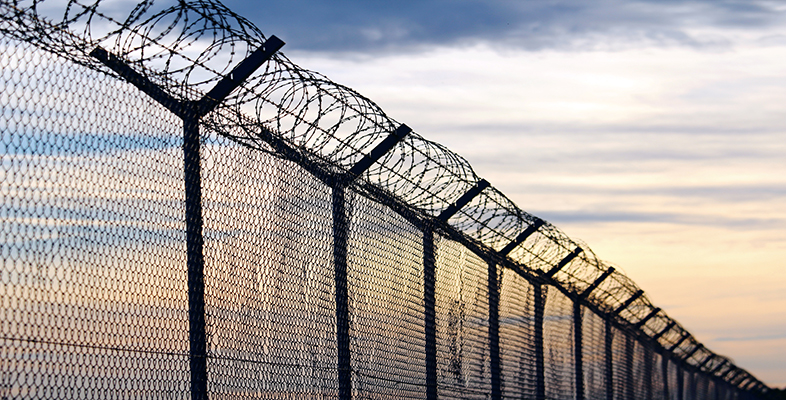4.4 Counting the costs of the ‘War on Terror’: a social harm analysis
From a social harm perspective, significant harms of the ‘War or Terror’ have arisen by justifying and legitimating a set of new policies and practices which in part flow from the way in which the issue has been framed. The discourse of ‘security’ has been particularly prevalent. While ‘security’ is emphasised on the one hand as being for protective purposes, it has also been associated in relation to the ‘War on Terror’ with increasingly restrictive and repressive policies.
This discourse on security and resultant policies and practices is of interest to zemiologists since, in Western states, most of the media have focused largely on the harms arising from actions associated with ‘Islamist terror’, but have given little consideration to harms resulting from new security policies. For example, from a social harm perspective, the loss of freedoms that these ‘security’ responses have brought about could be seen as producing social, political harms, and even physical harms. It is notable that the harms that the security policy brings are not borne equally by every section of the population.
While terrorism itself of course causes great harm, responses to terrorism can also cause great harm and potentially they may even be more harmful than the phenomenon they are supposed to be addressing. By applying a social harm approach to the case study of the ‘War on Terror’ and the policies and responses to which it gives rise, you can explore further some of the claims that social harm theorists have made, specifically:
- That the criminalisation and punishment of marginalised and relatively powerless groups who are often seen as being associated with terrorism because of their ethnicity, inflicts further harm on these groups and increases inequality.
- That the discourse of terrorism gives legitimacy to the expansion of crime control and other security measures.
- That the framing of issues as ‘crime’ or ‘terrorism’ serves to maintain power relations.
In the following sections you will consider the harms that have arguably resulted from the ‘War on Terror’ and consider the question of whether the measures intended to protect people from harm can themselves create further harms.
Activity 8 Do some deaths count more than others?
Watch this clip from the documentary Truth and lies in the War on Terror by the journalist John Pilger, made in 2003 about the military response to the events of 9/11 in Afghanistan and Iraq, under the banner of ‘Operation enduring Freedom’. In this film Pilger outlines some of the harms that have resulted from these interventions by Western states. Can you identify four or more harms this film clip illustrates?
WARNING: THIS FILM CLIP CONTAINS IMAGES AND TESTIMONY YOU MAY FIND DISTRESSING.

Transcript: Video 1
Discussion
You may have listed some of the following harms:
- Physical harms:
- Death of innocent civilians
- Destruction of property and infrastructure, including basic utilities
- Psychological and emotional harms:
- Psychological impact of the War on Terror on civilians who are the target of these policies
- Financial and economic harms:
- Failure to provide compensation or financial aid for reconstruction
- Cultural and relational harms:
- Mistrust of U.S. government by both U.S. citizens following their use of civilian deaths in 9/11 to justify overseas interventions and Afghan citizens following deaths and destruction in Afghanistan
In this film, Pilger uses the speeches by George W. Bush and Tony Blair who draw on the language of freedom and justice, juxtaposing them against images of violence and harms these policies inflict on ordinary civilians in Iraq and Afghanistan.
A range of recent scholarship and media analysis has sought to measure the harms of the ‘War on Terror’, and it has attempted to compare the immediate costs of the 9/11 terrorist attacks with those of the military action that emerged in response to them. For example, whilst just under 3,000 people lost their lives in the United States in the events of September 11 2001 (Malley and Finer, 2018), the estimates discussed below suggest that this number was far exceeded by the civilian casualties which resulted from U.S.-led military intervention in Iraq and Afghanistan, launched as part of the ‘War on Terror’.
Mortality data is highly contested in conflict contexts. It is notable also that the U.S. government does not keep official data on civilian deaths resulting from the U.S. led War on Terror. Some unofficial reports however, estimate up to 31,419 civilian deaths in Afghanistan as a direct result of the military action between October 2001 and July 2016 (Watson Institute for International and Public Affairs, 2016).
In Iraq, the NGO Iraq Body Count project recorded between 180,093 and 201,873 civilian deaths from violence since the invasion of Iraq in 2003 and February 2017 (Iraq Body Count, 2018). Some of the wider harms of the ‘War on Terror’ in Iraq are also revealed in a 2013 public health study (Hagopian et al., 2013). This report documented almost half a million direct and indirect deaths between 2003 and 2011, including deaths caused by failures of heath, sanitation, transportation and other basic systems and wider infrastructure as a result of the ‘War on Terror’. This evidence suggests that taking an approach which focuses only on harms resulting from ‘crimes’ (such as ‘terrorist’ acts) might overlook significant and extensive harms resulting from security measures and state responses to terrorism.
